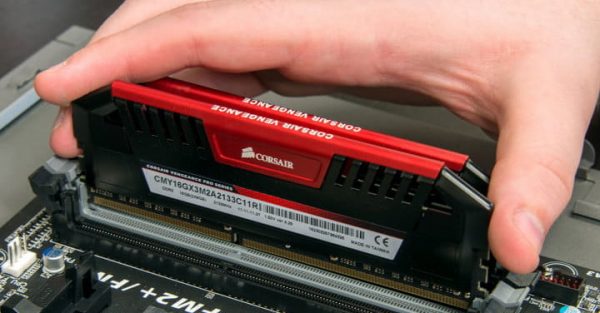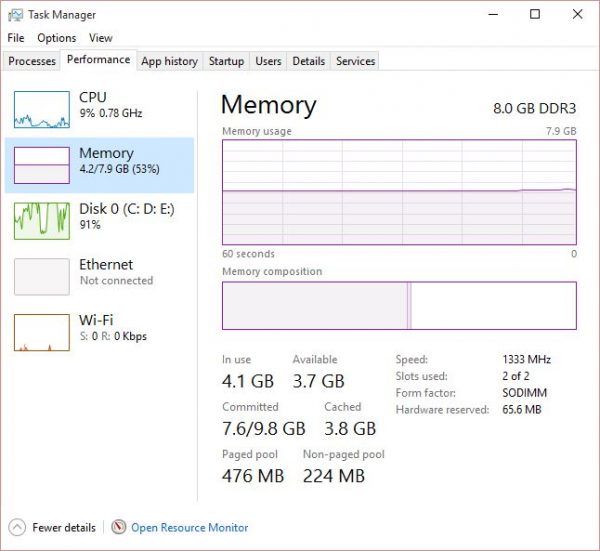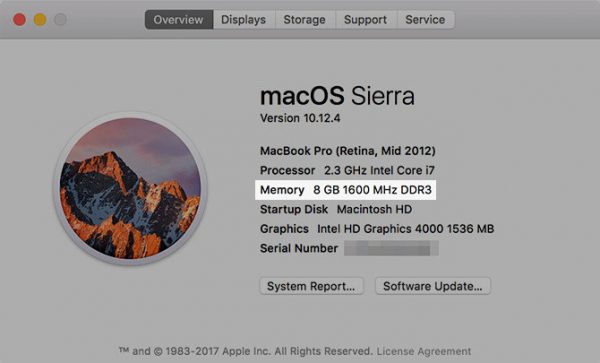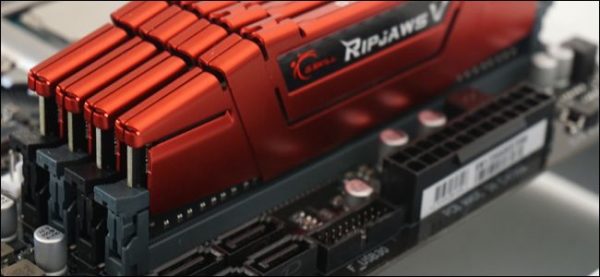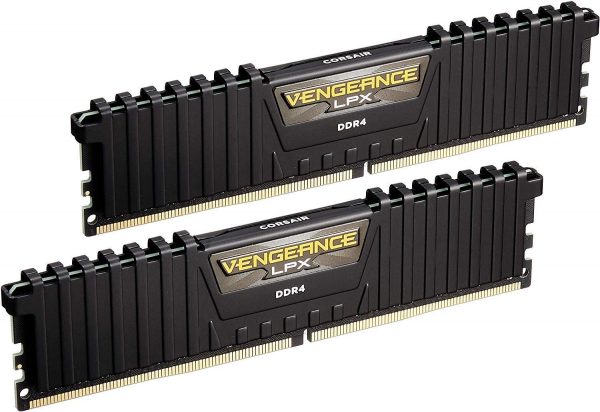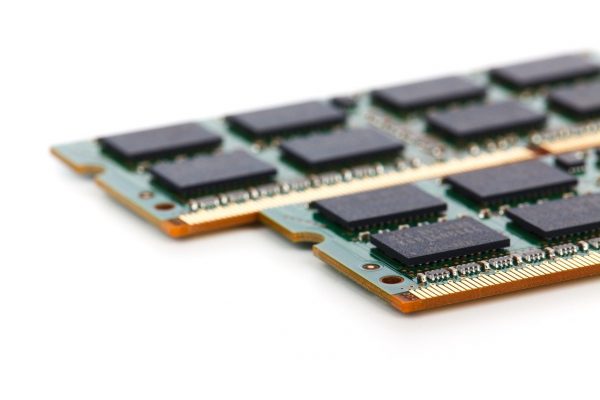Random-access memory, more commonly known as RAM, is an essential component in most computers. If the devices do not have RAM, doing anything on the system would be much slower. You won’t be able to open an application or game, making your device unusable. If you are curious to know what RAM is, it is used to temporarily store all the information your device needs. When you access information in RAM, it is insanely fast compared to hard drives that provide longer-term storage. This guide will help you learn more about what RAM is, how to install it, or how much do you need.
What is RAM?
As mentioned above, RAM stands for Random Access Memory and is also known as main memory, system memory, or primary memory. This hardware device is located inside your computer or device that lets information be stored and retrieved. The more RAM you have, the quicker the information can be stored and accessed to make the device perform faster. Your RAM will temporarily store the action you’re making on your desktop, laptop, or mobile device. You don’t want your CPU going through your slower storage options like a hard drive or SSD whenever you start a new action. Even though these storages have evolved over the years, they’re still slower compared to RAM. Information that is stored in your RAM can be read from anywhere at almost the same speed. Since this hardware is hard-wired to your system, there’s no real latency when accessing the available storage. Since RAM is a short-term memory, it does not remember everything forever. Known as a “volatile” technology, it resets and forgets everything once the device loses power. This is why it suits handling tasks on a short-term basis. Meanwhile, hard drives and SSDs make sure your device holds information when turned off. If you’re interested to know how much RAM do you need for gaming, we have a guide that can help you out.
Different Types of RAM
Now you know what RAM is used for, it is now time to discuss the different types of RAM. The term RAM or memory is a bit broad and covers a few different types. When talking about RAM, they usually use terms DRAM and SDRAM. Users don’t need to understand the technical side of each terminology, but learning the basics of it can be helpful. When you buy a laptop or computer, you might come across the term DDR4. That is what you can see in modern sticks although the older DDR2 and 3 can still be seen. The number besides DDR signifies the generation, with each generation becoming faster than the previous ones. It is also important to note that every generation has physical differences and cannot be interchanged with one another. In the video game space, another term that’s commonly used is video RAM. It used to be a separate component but is now used to determine your graphic card’s memory. If we are talking about game consoles, VRAM can mean the system memory. It usually has to do with the memory reserved exclusively for the GPU. Techy people call this as graphic DDR. GDDRs usually come with a general designation, for example, GDDR6. GDDR6 is common among modern graphic cards, but that isn’t often the case. Some graphic cards may use a different form of VRAM, known as High Bandwidth Memory. Compared to GDDR6, it has improvements in overall performance. However, more companies prefer using GDDR due to HBM’s expensive price tag.
Check How Much RAM You Have (Windows)
There are several ways to check how much RAM your Windows computer has. If you are a Windows 10 user, access your Task Manager feature. Task Manager can be accessed by right-clicking your taskbar and selecting the feature. Alternatively, you can press Ctrl+Shift+Esc or Ctrl+Alt+Delete and select it from there. Once you’re in the Task Manager window, select the “Performance” tab and click on “Memory.” Click on “More Details” in case you can’t locate any tabs. After accessing this feature, the total amount of random access memory your Windows device has will be shown here. The Task Manager also indicates the standard it is using, the speed, its form factor, and how many physical memory slots your system is using. You can upgrade your PC or laptop’s RAM if you want to, but make sure to get professional help if you don’t know how to. If you are using Windows 7, the Task Manager function doesn’t give out this useful information. To know the amount you have, access your Control Panel. Select System and Security next, and pick the System page once you’re there. You can also open this quickly by opening your start menu, right-clicking Computer, and clicking ‘Properties.”
How to Know How Much RAM You Have (MacOS)
For Mac users, knowing your total amount of RAM is much easier. Just press the Apple icon in the upper left part of your home screen. Then, you have to select the About This Mac function. There you will see a list of specs which include the total amount of RAM you have. The step above only gives you an overview of how much your RAM is. If you want to diagnose why your computer is slowing down, you should check the Activity Monitor. Upon experiencing slowdowns, press Command+Space to open the Spotlight, type “Activity Monitor”, and hit Enter. On top of the window, click the “Memory” tab. It will show you a visual aid of your RAM usage at that moment to give you an overview of what application is eating up your RAM. Keep in mind that having more free RAM does not make your performance better. Other factors can hinder your performance, but upgrading and learning how to free up space on your Mac is always good. If your Activity Monitor says you’ve used up your RAM, you probably need to upgrade your machine. To troubleshoot this, just close any unused programs on your Mac. Unfortunately, modern Mac computers cannot have their amount upgraded. Older Mac desktops and laptops had the luxury of having their RAM compatible with upgrades. Newer offerings from Apple have their RAM set and part of the motherboard. If you want to know if you can upgrade your RAM, check the specific model of your Mac listed in About This Mac, google it, and see what you can do about it. If you want to know more about freeing up space and you’re using PC, here is our guide on how to free up disk space on your computer.
How to Increase Your Ram (PC Users)
How Much RAM Can Your PC Accommodate?
If you are going to use your PC for heavy applications like photo/video editing, you need higher RAM for your PC. But before you get technical and upgrade your PC, you must first need to know how much RAM your PC can handle. You should consider how much RAM is compatible with your version of Windows and your motherboard. Avoid getting a bigger amount if your motherboard does not allow it.
Windows RAM Compatibility
32-bit Windows – Can handle 4GB for all variations of Windows 10. This is the same case for Windows 7. 64-bit Windows: 128 GB for Windows 10 Home Up to 2 TB for Windows 10 Education, Professional, and Enterprise 8 GB for Windows 7 Home Edition Up to 16 GB for Windows 7 Home Premium Up to 192 GB for Windows 7 Professional
Motherboard
Your motherboard’s RAM limit will depend on the model. Most modern computers will support at least 8 GB of RAM, and these motherboards will usually allow their users the ability to upgrade their RAM. To make sure that you can upgrade your RAM, read the documentation on your motherboard. If you are unsure, you can use Speccy to check what you’re packing inside your PC tower. Google your model number to find the details you need. Once you have figured these out, you can go ahead and upgrade your RAM. If you want a motherboard for gaming, read our how to choose a gaming motherboard guide.
How to Upgrade Your Desktop Memory
Once you have decided that you need an upgrade and have chosen which RAM you want to install to your desktop, you can now go ahead and follow these instructions.
Upgrading Steps
How to Upgrade Your Laptop Memory
Before starting to upgrade the RAM of your laptop, the first thing you need to do is to determine the DIMM or DIMMS of your laptop and how you can reach them. If you own a large laptop, there’s a chance that you can access the RAM slots without having to crack it open. However, some smaller laptops have their sticks bolted down to the motherboard. The thinnest and lightest laptops will most likely give you no chance to replace the sticks. Each laptop has a different way to install new sticks, so make sure to check the laptop brand and model if you can’t upgrade your RAM and follow the steps for each type.
How Much RAM Do You Need?
Less than 4GB
This is not recommended for anyone unless you are the lightest laptop/computer user.
4GB to 8GB
This is recommended for typical users that use minimum configuration.
8GB to 16GB
This is considered the standard amount in today’s world. This will allow you to multitask and play games with minimal trouble.
16GB or more
This is recommended for users running demanding applications such as video editing software, AutoCAD, and graphics-heavy games. If your PC or laptop demands a lot of RAM, you can start with 16 GB and move up from there.
Advantages of Upgrading
There many advantages of having a bigger RAM in your computer system, one of which helps in increasing system performance. Here are some of the other benefits upgraded RAM can provide:
Faster transfer of data from one location of the hard disk to another Faster startup and shutdown of the system Increased processing power from your CPU Advanced features like the Graphical User Interface will be good
Points to Keep in Mind During Ram Upgrade
When you upgrade your RAM, there are certain points you need to keep in mind. Remember that it can’t be upgraded instantly. Focus on the following points if you are looking to upgrade:
You should look first for the processor support. The processor will be very slow for some systems, and that will make upgrading useless. The same speed will be sustained even if you upgrade. Before deciding for an upgrade, check whether there is support from the motherboard. If your motherboard has no slots, the upgrade can not be made. The next important thing is the versions of the RAM. When you go for an upgrade, first see whether its version is compatible with the motherboard. A RAM stick placed into an incompatible motherboard will cause a lot of problems. Only upgrade if your workload requires you to. If the current speed of your system is up to par, then there’s no use in upgrading the RAM.
